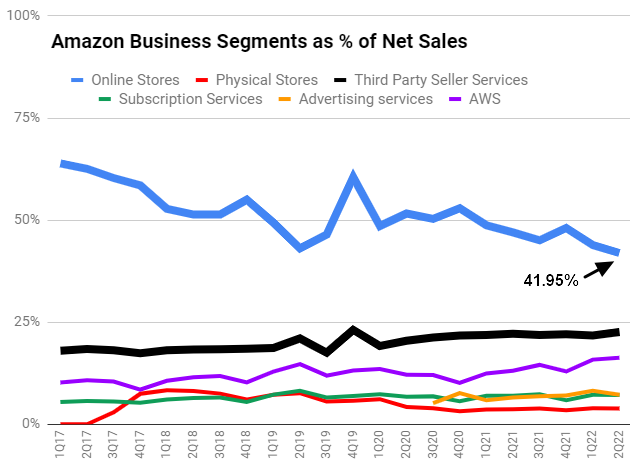
Amazon wants to expand long-term into areas such as a healthcare, self-driving taxis, and home robots, but two data points from its latest results reveal a more fundamental transformation already taking place in its core business.
1. The company’s first-party online store sales of $50.9 billion in the second quarter represented less than 42% of its overall net sales of $121.2 billion.
That’s a new percentage low, according to data tracked by GeekWire.
Five years ago, Amazon’s online store sales were about 60% of its overall sales.
Online store sales fell 4% in the latest quarter, from $53.2 billion a year ago, but the long-term shift results more from faster growth in other parts of Amazon’s business, including Amazon Web Services and third-party seller services. Speaking of which …
2. Third party sellers were responsible for 57% of units sold on Amazon in Q2.
That’s a record high, said Brian Olsavsky, Amazon’s chief financial officer, on a call with reporters after the earnings report Thursday afternoon.
In a related trend, Amazon’s revenue from third-party seller services topped $27 billion, a record for a non-holiday quarter. Third-party seller service include sales commissions collected by Amazon from third-party sellers, and fees the company receives for packing and shipping their orders.
Taking these two trends together — looking black and blue lines in the chart above, and considering the expansion of Prime and fulfillment beyond Amazon.com — it’s not hard to imagine a world in which Amazon makes more money offering services to third-party sellers than it does selling products directly to consumers on its own.
See our coverage of Amazon’s Q2 2022 earnings for more.



